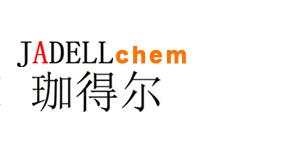Recombinant Human Erythropoietin (CHO-expressed) 可保护心肌不受缺血——再灌注损伤,促进有益的重构。
Synonyms
rHuEPO; Epoetin; EPO ; 重组人红细胞生成素 (CHO细胞表达)
Species
HumanSource
CHO Accession
P01588 Gene ID
2056 Molecular Weight
26-36 kDa AA Sequence
APPRLICDSR VLERYLLEAK EAENITTGCA EHCSLNENIT VPDTKVNFYA WKRMEVGQQA VEVWQGLALL SEAVLRGQAL LVNSSQPWEP LQLHVDKAVS GLRSLTTLLR ALGAQKEAIS PPDAASAAPL RTITADTFRK LFRVYSNFLR GKLKLYTGEA CRTGDR Biological Activity
The ED50 is <1 ng/mL as measured by TF-1 human erythroleukemic cells, corresponding to a specific activity of >1.0 × 106 units/mg. Appearance
Lyophilized powder. Formulation
Lyophilized after extensive dialysis against PBS. Endotoxin Level
<0.2 EU/μg, determined by LAL method. Reconstitution
Reconstitute the lyophilized recombinant Human Erythropoietin (CHO-expressed) (rHuEPO) to 100 μg/mL using ddH2O or PBS. Storage & Stability
Lyophilized recombinant Human Erythropoietin (CHO-expressed) (rHuEPO) is stored at -20°C. After reconstitution, it is stable at 4°C for 1 week or -20°C for longer. It is recommended to freeze aliquots at -20°C or -80°C for extended storage. Shipping
Room temperature in continental US; may vary elsewhere. Background
Erythropoietin (EPO), originally identified for its critical hormonal role in promoting erythrocyte survival and differentiation, is a member of the large and diverse cytokine superfamily. EPO and EPOR function as the primary mediators of a general protective response to tissue hypoxia, which acts to maintain adequate tissue oxygenation through adjustments of circulating red cell mass by using a hormonal feedback-control system involving the kidney and the bone marrow. EPO and EPORs are also expressed by other tissues and organs, including the brain and heart. EPO has also been shown to stimulate mitosis and signaling in astrocytes, endothelial cells, cardiomyoblasts, and cardiomyocytes maintained in vitro[1]. |



